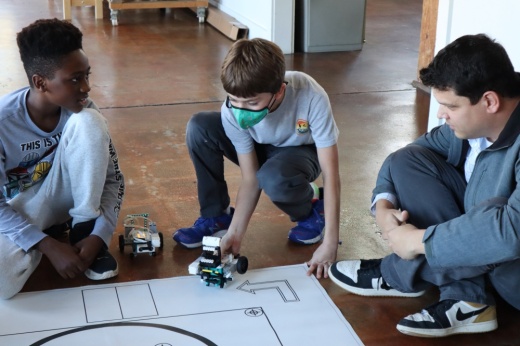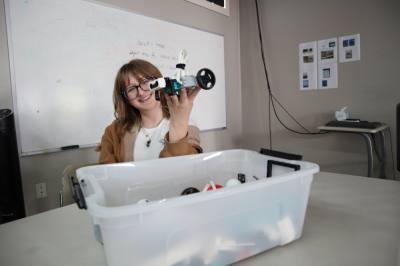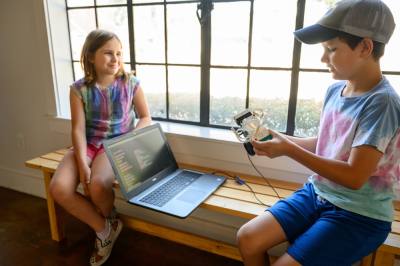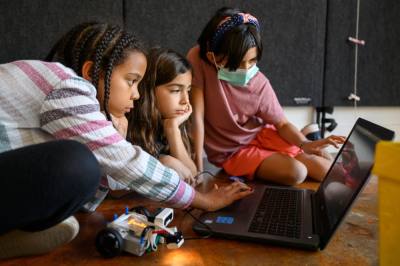As the sound of robotics noises whirred through the area, experiment notes were jotted down and dialogue of changes that could be made to the hypothesis were discussed back and forth. The experiment was done multiple times until the team got the result they were looking for.
While this might sound like a lab at some large tech company filled with employees who all possess a master's degree or above, it was actually the robotic class currently being taught at St. Stephen’s Episcopal School-Houston, and the people doing the experiments were students in fourth through eighth grade.
Located in the heart of Houston, St Stephen’s has already made the news before for the advanced Science, Technology, Engineering and Mathematics program many of their students participate in. It only made sense they would expand these studies to include robotics. The program is in its first year and currently takes place every Monday and Thursday.
The robotics program is very task- and project-based, with many of the tasks having a real world application, according to many of the students.
On any random day, the students could be working on a number of projects. Typically, the project is introduced by their teacher Matthew Beard, and students have as many tries as they need to reach the goal of the project. Prizes are also awarded for first, second and third places in terms of who completes the project first.
“You change one small detail. You test it to see if it would work well or not,” said Elliott, one of the robotics students. “It sometimes takes us 10 tries to get it right.”
One of the benefits of having a class like this is introducing students, particularly female ones, to STEM programs like robotics and inspiring them to keep pursuing it as they grow older.
“My advice for [girls in STEM] is to not be too anxious and just try to get involved and not let the other person do everything and just try to do something, try to be a part of it. You should work together and see what we can do,” said Mia, a sixth grade girl in class.
The other benefit to the class comes in the form of how students learn from it. Many of the students struggle when it comes to other classes, but start to thrive when they are put in front of a project requiring them to use their hands and work with others.
“I spend most of my time with these students in that sort of classroom environment, and the students that I see struggle consistently there, will come alive here when you see them in a different element, and when they get their hands on the actual Legos, they are off to the races,” Beard said. “It's like seeing a completely different student, and it's really valuable for me to see them in that different context.”
With the success of the program, staff at the school are eagerly anticipating next school year when more students get to partake in the program. Having it be a pilot program only increases St. Stephen’s mission in providing unique STEM education to young students.
“St. Stephen’s is proud to launch our robotic STEM program this year for grades four to eighth grade,” Interim Head of School Nahla Nasser said. “This has been an excellent addition to our curriculum here.”
The above story was produced by Community Impact's Storytelling Multi-Platform Journalist Sierra Rozen with information solely provided by the local business as part of their "sponsored content" purchase through our advertising team. Our integrity promise to our readers is to clearly identify all CI Storytelling posts so they are separate from the content decided upon, researched and written by our journalism department.
Select your community
Become an InCIder
News
- Austin Metro
-
Houston Metro
- Houston Metro Home
- Bay Area
- Bellaire | Meyerland | West University
- Conroe | Montgomery
- Cy-Fair | Jersey Village
- Cypress
- Heights | River Oaks | Montrose
- Katy | Fulshear
- Lake Houston | Humble | Kingwood
- New Caney | Porter
- Pearland | Friendswood | Manvel
- Spring | Klein
- Sugar Land | Missouri City
- The Woodlands
- Tomball | Magnolia
- Dallas | Fort Worth Metro
- San Antonio Metro










